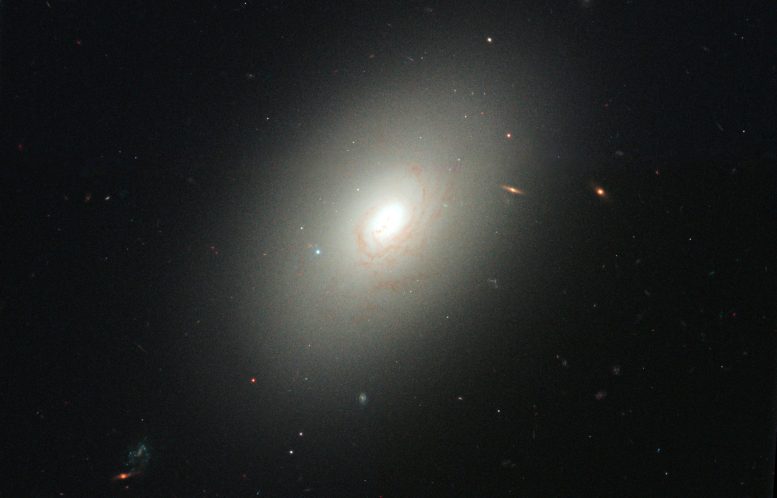
Elliptical galaxy NGC 4150. Credit: NASA, ESA, R.M. Crockett (University of Oxford, U.K.), S. Kaviraj (Imperial College London and University of Oxford, U.K.), J. Silk (University of Oxford), M. Mutchler (Space Telescope Science Institute, Baltimore, USA), R. O’Connell (University of Virginia, Charlottesville, USA), and the WFC3 Scientific Oversight Committee
What Is an Elliptical Galaxy?
Elliptical galaxies have an even, ellipsoidal shape. They typically contain a much greater proportion of older stars than spiral galaxies do.
Four classes are used to classify galaxies: spiral; barred spiral; elliptical and irregular. Elliptical galaxies have a smooth ellipsoidal or spherical appearance, and they have far less structure than spiral galaxies do. Elliptical galaxies are usually found in galaxy clusters.
There is a common misconception that astronomers used to think that elliptical galaxies were the evolutionary forerunners to spiral galaxies, because Hubble himself referred to elliptical galaxies as ‘early-type’ and spiral galaxies as ‘late-type’. In fact, Hubble just used those names to indicate the differences in structure between elliptical and spiral galaxies, and he himself was not sure how the different types of galaxies evolved.
Elliptical galaxies have an even, ellipsoidal shape. They typically contain a much greater proportion of older stars than spiral galaxies do. Credit: ESA/Hubble, NASA, ESA, R.M. Crockett (University of Oxford, U.K.), S. Kaviraj (Imperial College London and University of Oxford, U.K.), J. Silk (University of Oxford), M. Mutchler (Space Telescope Science Institute, Baltimore, USA), R. O’Connell (University of Virginia, Charlottesville, USA), and the WFC3 Scientific Oversight Committee
Current thinking amongst astronomers is that most elliptical galaxies formed from the collisions and subsequent mergers of spiral galaxies. The typical ages of the stellar populations of elliptical and spiral galaxies provide evidence for this theory, because the stars in elliptical galaxies are typically much older and redder than those in spiral galaxies. Whilst spiral galaxies have rich reservoirs of the dust and gas that fuel star formation, elliptical galaxies appear to have virtually exhausted that fuel, and so there is very little raw material for the formation of new stars. Therefore, it seems likely that elliptical galaxies are largely populated by stars that formed within active spiral galaxies. Due to their very low rate of star formation and their populations of old, red stars, elliptical galaxies are sometimes colloquially referred to as ‘red and dead’ by astronomers.
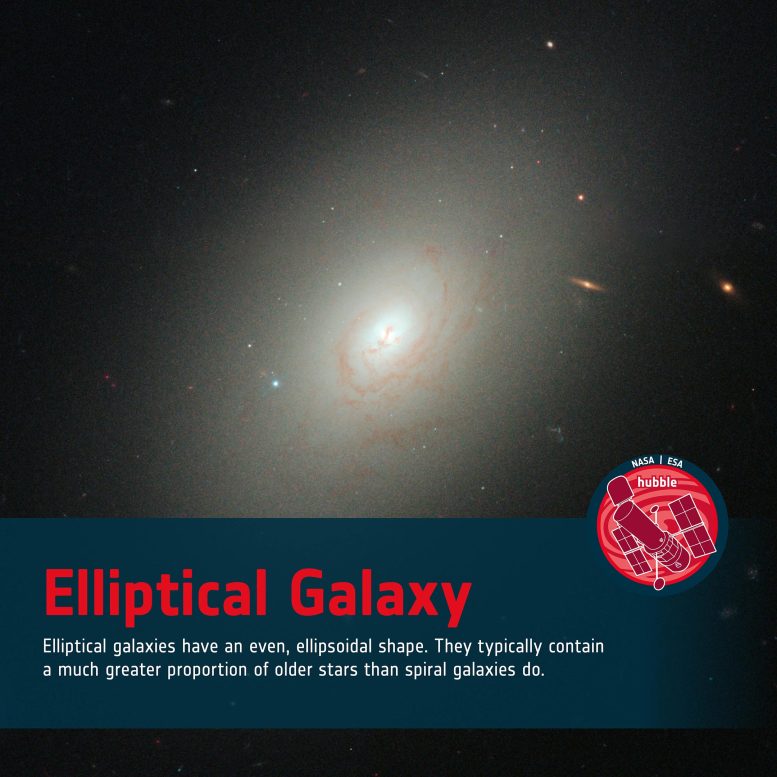
Elliptical Galaxy. Credit: NASA, ESA, R.M. Crockett (University of Oxford, U.K.), S. Kaviraj (Imperial College London and University of Oxford, U.K.), J. Silk (University of Oxford), M. Mutchler (Space Telescope Science Institute, Baltimore, USA), R. O’Connell (University of Virginia, Charlottesville, USA), and the WFC3 Scientific Oversight Committee
Recently, the Hubble Space Telescope and ESO’s Very Large Telescope (VLT) were used to help solve an astrophysical mystery that had centered on the most massive elliptical galaxies. These gigantic ‘red and dead’ galaxies were not always so inactive. In fact, earlier in the history of the Universe, the evolutionary precursors to these massive galaxies were full of gas and forming stars at a prodigious rate. Thanks to Hubble and the VLT, astronomers were able to show for the first time how star formation in these ‘dead’ galaxies actually sputtered out billions of years ago. Hubble has also captured beautiful imagery of elliptical galaxies throughout its more than 30-year history. This includes detailed views of the elliptical galaxies NGC 4150 (see image at the top of this page) and NGC 2768.



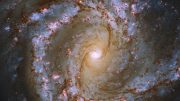
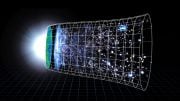
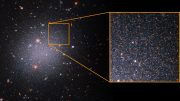
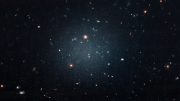

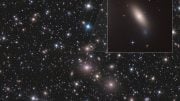
Be the first to comment on "Astronomy & Astrophysics 101: Elliptical Galaxy"